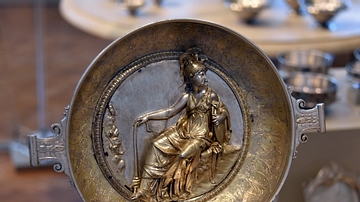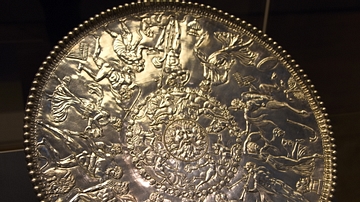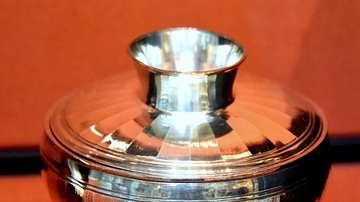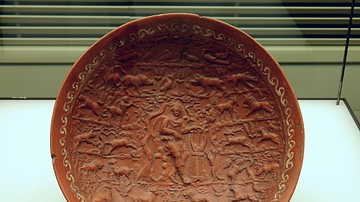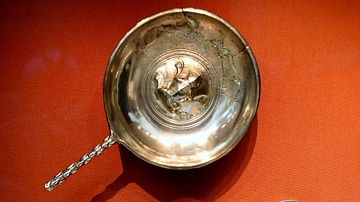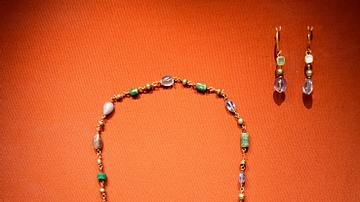Illustration
The Latin inscription on this dish, reading D.D.ICRESCONI CLARENT ("Gift given to the distinguished Cresconii"), identifying the family who owned the Carthage Treasure as Cresconii. They were prominent North African family of the 300s to 400s CE, whose members included high-ranking civil servants and members of the clergy. 300s-400s CE. From the Hill of St. Louis, Tunisia. The Carthage Treasure comprises 31 pieces of jewellery and silver tableware, dating from around 400 CE. The treasure was found in Carthage, modern-day Tunisia. It is thought to have been buried for safekeeping by the prominent Cresconii family at a time of crisis, possibly when the city was attacked by the Germanic Vandal King Gaiseric in 439 CE. Bequeathed by Sir Augustus Wollaston Franks. (The British Museum, London).
About the Author
Cite This Work
APA Style
Amin, O. S. M. (2016, October 02). Inscribed Dish from the Carthage Treasure. World History Encyclopedia. Retrieved from https://www.worldhistory.org/image/5752/inscribed-dish-from-the-carthage-treasure/
Chicago Style
Amin, Osama Shukir Muhammed. "Inscribed Dish from the Carthage Treasure." World History Encyclopedia. Last modified October 02, 2016. https://www.worldhistory.org/image/5752/inscribed-dish-from-the-carthage-treasure/.
MLA Style
Amin, Osama Shukir Muhammed. "Inscribed Dish from the Carthage Treasure." World History Encyclopedia. World History Encyclopedia, 02 Oct 2016, https://www.worldhistory.org/image/5752/inscribed-dish-from-the-carthage-treasure/. Web. 23 Apr 2025.



